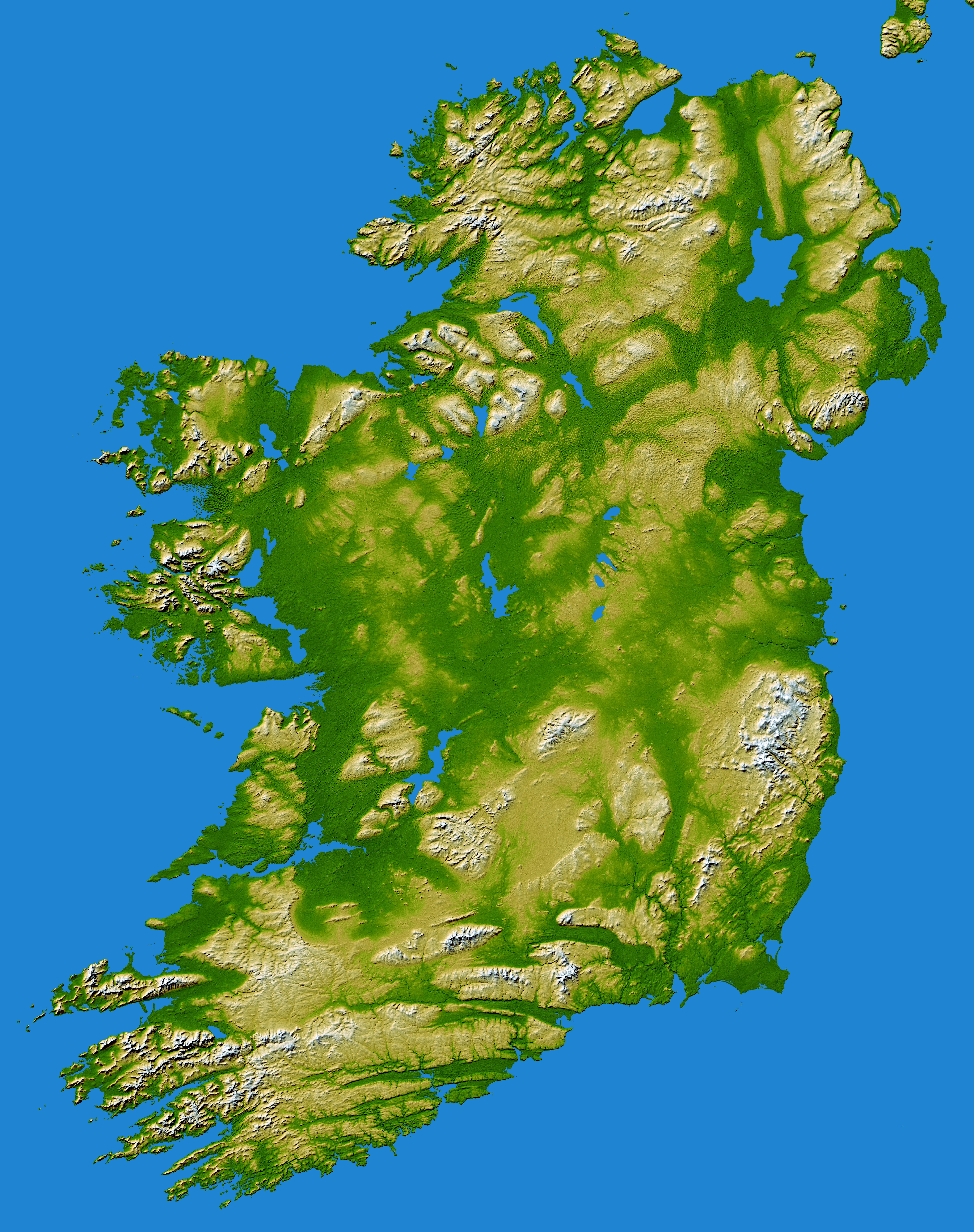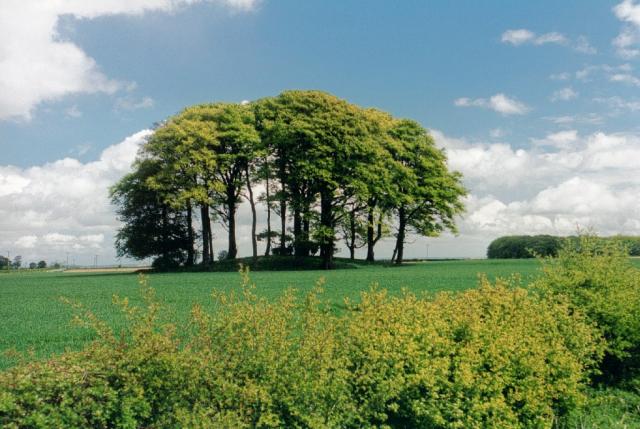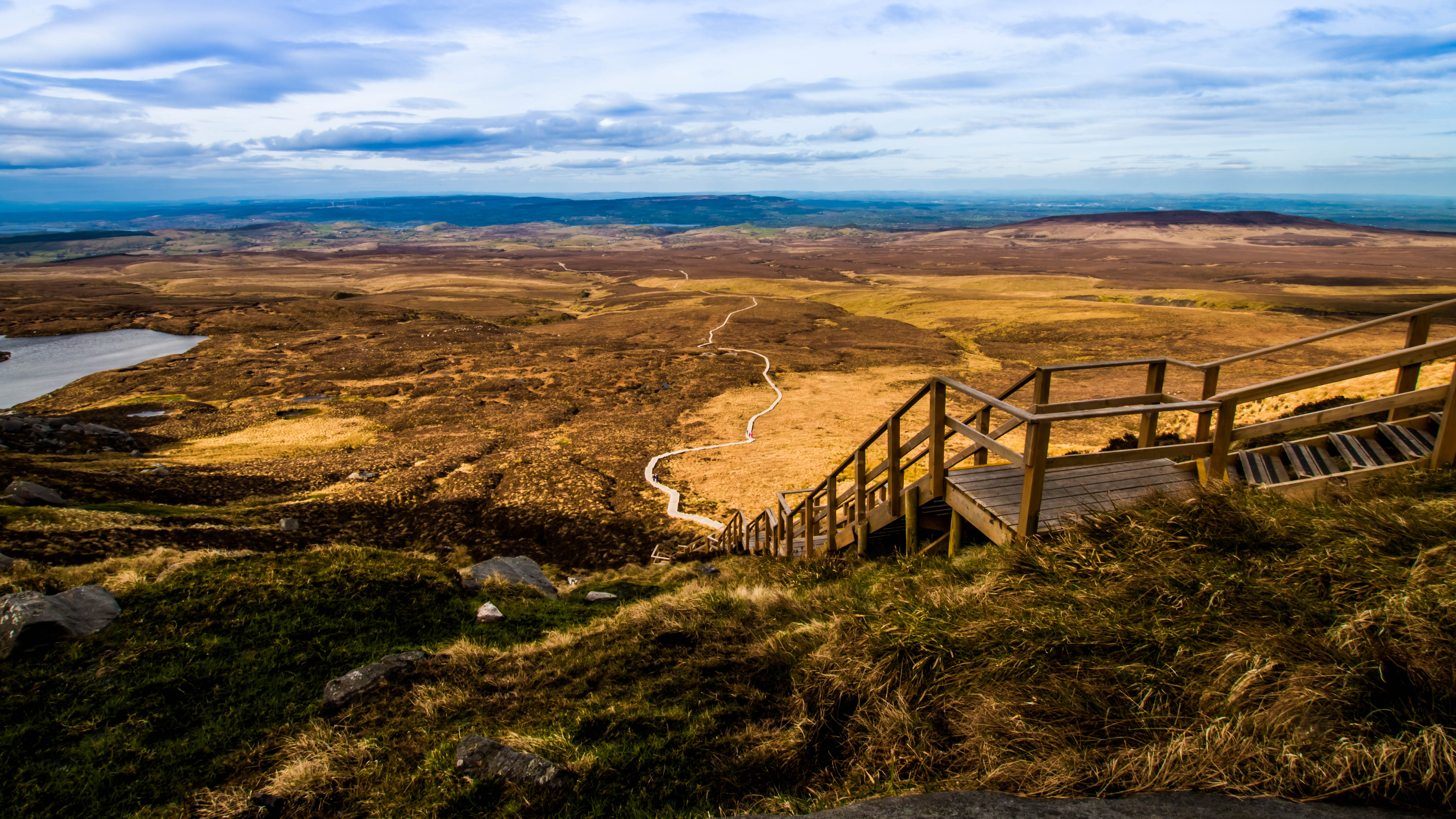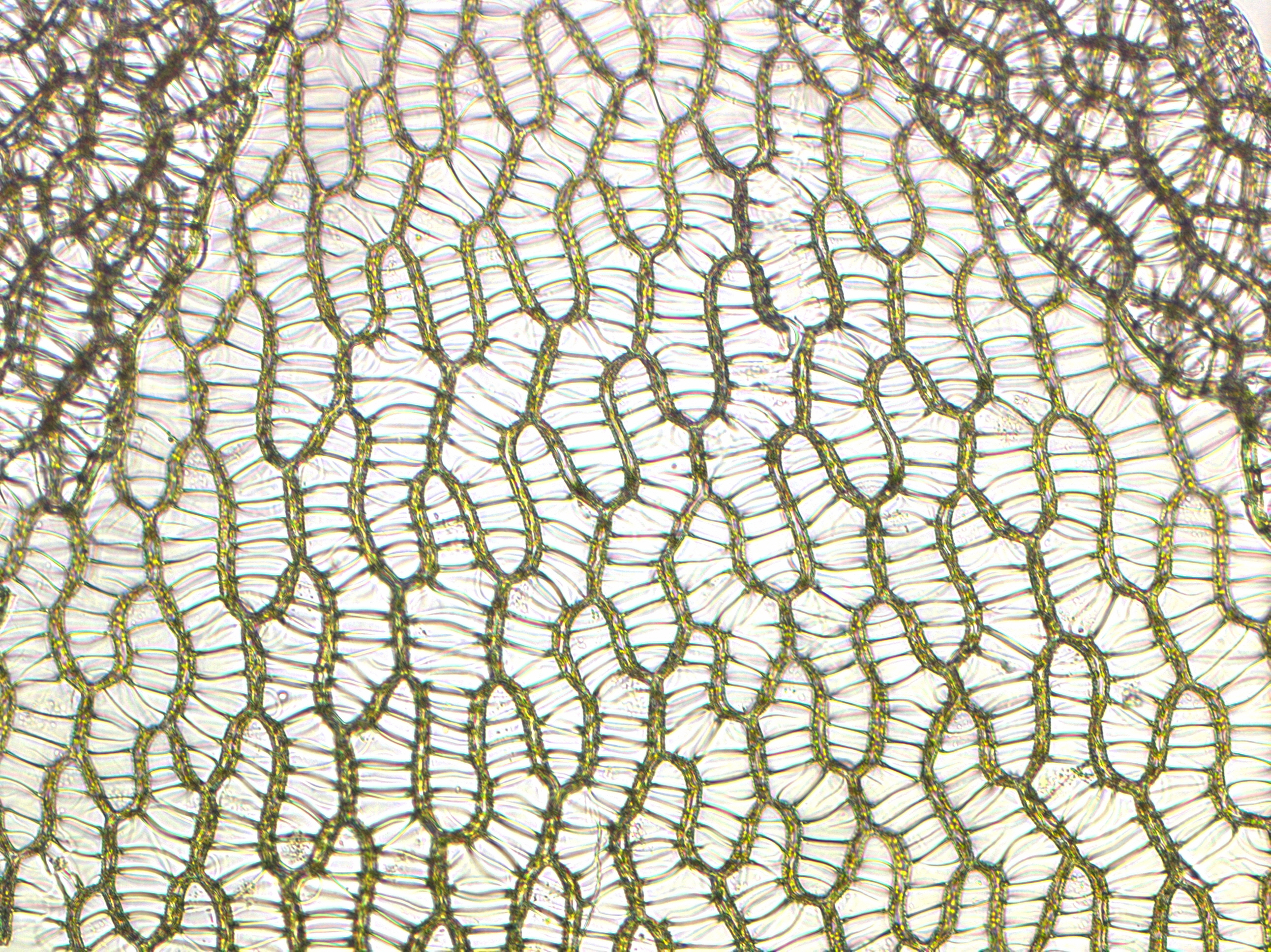|
Slieve Beagh
Slieve Beagh () is a mountainous area straddling the border between County Monaghan in the Republic of Ireland and County Fermanagh and County Tyrone in Northern Ireland. A point just east of its summit is the highest point in Monaghan; however the true summit is on the Fermanagh-Tyrone border. The point where the three counties meet, is referred to as the "Three County Hollow". Name The original Irish name for the area is ''Sliabh Beatha'', which has been anglicised to ''Slieve Beagh'', but sometimes the two languages are combined to form ''Sliabh Beagh''. According to Irish mythology, the name refers to the mythological figure Bith, who was buried in a cairn on top of the mountain.Tempan, PaulIrish Hill and Mountain Names. MountainViews.ie. Although the summit is in fact marked by a cairn, called Doocarn, it is likely that the name's original meaning is "mountain of birch". In County Monaghan, the locals typically refer to the Slieve Beagh as the "Bragan Mountains", taking th ... [...More Info...] [...Related Items...] OR: [Wikipedia] [Google] [Baidu] |
MountainViews
In these lists of mountains in Ireland, those within Northern Ireland, or on the Republic of Ireland – United Kingdom border, are marked with an asterisk, while the rest are within the Republic of Ireland. Where mountains are ranked by height, the definition of the topographical prominence used to classify the mountain (e.g. the change in elevation required between neighbouring mountains), is noted. In British definitions, a height of is required for a mountain, whereas in Ireland, a lower threshold of is sometimes advocated. The lowest minimum prominence threshold of any definition of an Irish mountain is (e.g. the Vandeleur-Lynam), however most definitions, including the International Climbing and Mountaineering Federation (UIAA) criteria, do not consider prominences below as being mountains (e.g. must at least be an Arderin or a Hewitt). Many British definitions consider a peak with a prominence below , as being a ''top'', and not a mountain (e.g. must be a Marilyn). ... [...More Info...] [...Related Items...] OR: [Wikipedia] [Google] [Baidu] |
Blanket Bog
Blanket bog or blanket mire, also known as featherbed bog, is an area of peatland, forming where there is a climate of high rainfall and a low level of evapotranspiration, allowing peat to develop not only in wet hollows but over large expanses of undulating ground. The blanketing of the ground with a variable depth of peat gives the habitat type its name. Blanket bogs are found extensively throughout the northern hemisphere - well-studied examples are found in Ireland and Scotland, but vast areas of North American tundra also qualify as blanket bogs. In Europe, the southernmost edge of range of this habitat has been recently mapped in the Cantabrian Mountains, northern Spain, but the current distribution of blanket bogs globally remains unknown. In the southern hemisphere they are less well-developed due to the relatively low latitudes of the main land areas, though similar environments are reported in Patagonia, the Falkland Islands and New Zealand. The blanket bogs known as ... [...More Info...] [...Related Items...] OR: [Wikipedia] [Google] [Baidu] |
Special Areas Of Conservation In Ireland
Special or specials may refer to: Policing * Specials, Ulster Special Constabulary, the Northern Ireland police force * Specials, Special Constable, an auxiliary, volunteer, or temporary; police worker or police officer Literature * ''Specials'' (novel), a novel by Scott Westerfeld * ''Specials'', the comic book heroes, see ''Rising Stars'' (comic) Film and television * Special (lighting), a stage light that is used for a single, specific purpose * ''Special'' (film), a 2006 scifi dramedy * ''The Specials'' (2000 film), a comedy film about a group of superheroes * ''The Specials'' (2019 film), a film by Olivier Nakache and Éric Toledano * Television special, television programming that temporarily replaces scheduled programming * ''Special'' (TV series), a 2019 Netflix Original TV series * ''Specials'' (TV series), a 1991 TV series about British Special Constables * ''The Specials'' (TV series), an internet documentary series about 5 friends with learning disabilitie ... [...More Info...] [...Related Items...] OR: [Wikipedia] [Google] [Baidu] |
Mountains And Hills Of County Monaghan
A mountain is an elevated portion of the Earth's crust, generally with steep sides that show significant exposed bedrock. Although definitions vary, a mountain may differ from a plateau in having a limited summit area, and is usually higher than a hill, typically rising at least 300 metres (1,000 feet) above the surrounding land. A few mountains are isolated summits, but most occur in mountain ranges. Mountains are formed through tectonic forces, erosion, or volcanism, which act on time scales of up to tens of millions of years. Once mountain building ceases, mountains are slowly leveled through the action of weathering, through slumping and other forms of mass wasting, as well as through erosion by rivers and glaciers. High elevations on mountains produce colder climates than at sea level at similar latitude. These colder climates strongly affect the ecosystems of mountains: different elevations have different plants and animals. Because of the less hospitable terrain and ... [...More Info...] [...Related Items...] OR: [Wikipedia] [Google] [Baidu] |
List Of Marilyns In The British Isles
This is a list of Marilyn hills and mountains in the United Kingdom, Isle of Man and Ireland by height. Marilyns are defined as peaks with a prominence of or more, regardless of height or any other merit (e.g. topographic isolation, as used in Munros). Thus, Marilyns can be mountains, with a height above , or relatively small hills. there were 2,011 recorded Marilyns. Definition The Marilyn classification was created by Alan Dawson in his 1992 book ''The Relative Hills of Britain''. The name Marilyn was coined by Dawson as a punning contrast to the '' Munro'' classification of Scottish mountains above , but which has no explicit prominence threshold, being homophonous with (Marilyn) '' Monroe''. The list of Marilyns was extended to Ireland by Clem Clements. Marilyn was the first of several subsequent British Isles classifications that rely solely on prominence, including the P600s, the HuMPs, and the TuMPs. Topographic prominence is a more difficult to estimate than ... [...More Info...] [...Related Items...] OR: [Wikipedia] [Google] [Baidu] |
List Of Mountains Of The British Isles By Height
This is a list of mountains in Britain and Ireland by height and by prominence. Height and prominence are the most important metrics for the classifications of mountains by the UIAA; with isolation a distant third criterion. The list is sourced from the ''Database of British and Irish Hills'' ("DoBIH") for peaks that meet the consensus height threshold for a mountain, namely ; the list also rules out peaks with a prominence below and thus, the list is therefore precisely a list of the 2,756 Simms in the British Isles (as at October 2022). Many classifications of mountains in the British Isles consider a prominence between as being a "top", and not a mountain; however, using the prominence threshold gives the broadest possible list of mountains. For a ranking of mountains with a higher prominence threshold use: * List of Marilyns in the British Isles, for ranking by height and by prominence, of peaks with prominence over ; or * List of P600 mountains in the British Isles, for ... [...More Info...] [...Related Items...] OR: [Wikipedia] [Google] [Baidu] |
Lists Of Mountains In Ireland
In these lists of mountains in Ireland, those within Northern Ireland, or on the Republic of Ireland – United Kingdom border, are marked with an asterisk, while the rest are within the Republic of Ireland. Where mountains are ranked by height, the definition of the topographical prominence used to classify the mountain (e.g. the change in elevation required between neighbouring mountains), is noted. In British definitions, a height of is required for a mountain, whereas in Ireland, a lower threshold of is sometimes advocated. The lowest minimum prominence threshold of any definition of an Irish mountain is (e.g. the Vandeleur-Lynam), however most definitions, including the International Climbing and Mountaineering Federation (UIAA) criteria, do not consider prominences below as being mountains (e.g. must at least be an Arderin or a Hewitt). Many British definitions consider a peak with a prominence below , as being a ''top'', and not a mountain (e.g. must be a Marily ... [...More Info...] [...Related Items...] OR: [Wikipedia] [Google] [Baidu] |
Cuilcagh
Cuilcagh () is a mountain on the border between County Fermanagh (in Northern Ireland) and County Cavan (in the Republic of Ireland). With a height of it is the highest point in both counties. It is also the 170th highest peak on the island of Ireland, and Ireland's only cross-border county top. Water from the southern slope flows underground until it emerges some miles away in the Shannon Pot, the traditional source of the River Shannon. The area is sometimes referred to as the Cuilcagh Mountains. Naming The name Cuilcagh comes from the Irish ''Cuilceach'', which has been translated as "chalky". However, the mountain is mainly sandstone and shale, covered with bog and heather. The cliff-edged summit surface of the mountain is formed from the hard-wearing Lackagh Sandstone which itself overlies the Briscloonagh Sandstone. "It is possible that the name refers to the limestone rock on the lower northern flanks, namely the Glencar and Dartry Limestone formations. Here a number ... [...More Info...] [...Related Items...] OR: [Wikipedia] [Google] [Baidu] |
Sphagnum
''Sphagnum'' is a genus of approximately 380 accepted species of mosses, commonly known as sphagnum moss, peat moss, also bog moss and quacker moss (although that term is also sometimes used for peat). Accumulations of ''Sphagnum'' can store water, since both living and dead plants can hold large quantities of water inside their cells; plants may hold 16 to 26 times as much water as their dry weight, depending on the species.Bold, H. C. 1967. Morphology of Plants. second ed. Harper and Row, New York. p. 225-229. The empty cells help retain water in drier conditions. As sphagnum moss grows, it can slowly spread into drier conditions, forming larger mires, both raised bogs and blanket bogs. Thus, sphagnum can influence the composition of such habitats, with some describing sphagnum as 'habitat manipulators'. These peat accumulations then provide habitat for a wide array of peatland plants, including sedges and ericaceous shrubs, as well as orchids and carnivorous plants.Keddy, ... [...More Info...] [...Related Items...] OR: [Wikipedia] [Google] [Baidu] |





